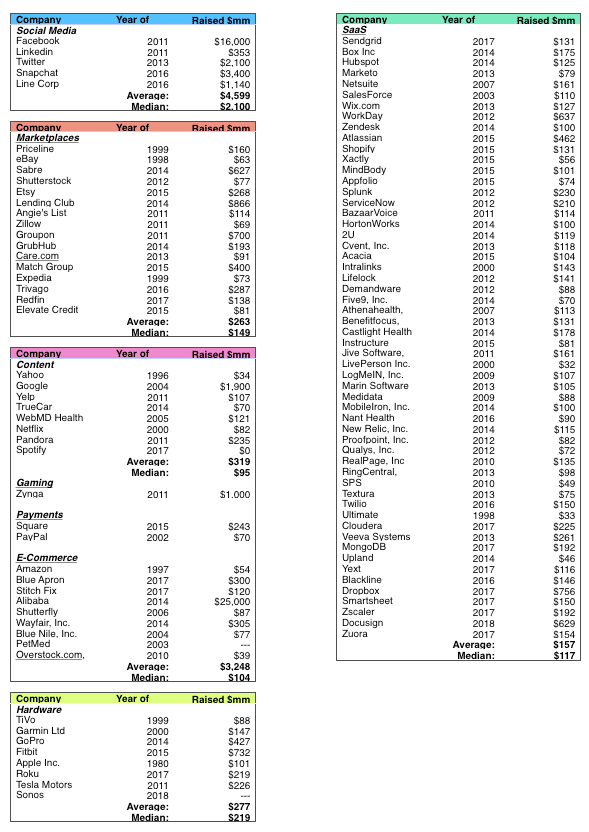This article will review how market size affects round size when raising funding.
Sammy is a co-founder of Blossom Street Ventures. We invest in companies with run rate revenue of $2mm+ and year over year growth of 50%+. We lead or follow in $1mm to $5mm growth rounds and can do inside rounds, secondaries, restructurings and special situations. We’ve made 16 investments all over the US in SaaS, e-commerce, marketplaces, and low-tech. We can commit in 3 weeks and our check is $1mm. Email Sammy directly at sammy@blossomstreetventures.com.
IPO’s are not only an exit, they’re usually also a company’s largest capital raise. Below we look at the size of 105 tech IPO’s and discuss the trends we see.
Market Size Affects Round Size
The overall takeaway: the larger the market size, the more money you’re going to raise, especially at IPO. This makes sense intuitively as the larger the market you’re going after, the more capital it takes to capture that market.

Social Media Companies and Market Size
Social media is the marquee example of the market size determining IPO size as these companies require a lot of capital to continue to scale (median IPO raised $2.1bln). The social media companies (FB, TWTR, SNAP, Line) have all raised billions, while only Google and Alibaba have done so in any other sector. Notably, Zynga raised $1bln in 2011, but that was based on their success of a game within Facebook.
Marketplace Companies and Market Size
Marketplaces have clusters. Six companies raised only $60mm to $100mm. Four companies raised $400mm to $866mm, and five companies raised $115mm to $275mm.
E-Commerce Companies and Market Size
E-Commerce is skewed heavily by the massive Alibaba raise ($25bln), which is particularly notable as the other giant, Amazon, IPO’d for a measly $54mm 20 years prior. Again, the market size in e-commerce has increased appreciably since Amazon’s IPO in 1997. Hence, it’s not surprising to see the much larger raise by Alibaba.
Hardware Companies and Market Size
Hardware is much more closely clustered with a median of $219mm raised and an average of $277mm. The low is $88m by TiVo in 1999 and the high is $732mm by Fitbit in 2015. In our view, this is again an example of the market size growing materially. Hence, the raises for more modern companies have become much larger.
SaaS Companies and Market Size
Software companies seem to have the smallest market (MSFT excluded). SaaS is very tightly clustered across the largest sample size, with an average raise of $157mm and median of $117mm. Most notably there are only two outliers in Workday ($637mm) and Atlassian ($462mm).
Content Companies and Market Size
Businesses that are dependent on distributing content in one way or another have had the lowest median raise (Google excluded). However, this data doesn’t properly represent the sector in our view.
Strictly looking at the data, these companies have typically raised more in line with SaaS companies and marketplaces, however early IPOs from Yahoo and Netflix (under $100m raised) alters the narrative on this sector, as does the unique ‘exit only’ IPO of Spotify whereby no capital was raised but an exit was achieved for investors. In content, it’s difficult to draw conclusions about the market based on the size of historical IPO’s.
.svg)




.png)


